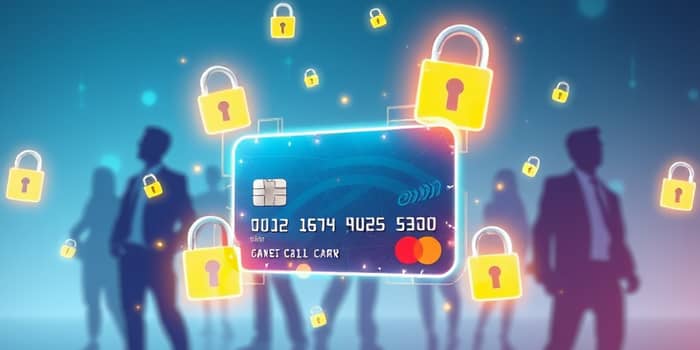
In an era when digital transactions are integral to daily life, protecting your plastic—credit, debit, prepaid, and other cards—has never been more critical. Recent data reveal a startling surge in fraud cases, affecting consumers across demographics. This guide delivers practical advice to fortify your defenses and keep your finances secure.
In 2022, the U.S. saw 440,666 reported credit card fraud incidents—a 13% jump from 2021—and 156,134 bank fraud cases, up 25%. With nearly 28% of consumers experiencing unauthorized charges last year and 37% rating fraud as a top concern, vigilance and proactive measures are essential to protecting your financial well-being.
Credit card and bank fraud continue to rise, fueled by evolving tactics and data breaches. Consumers report that 91% of banks intercepted suspicious activity before they noticed, highlighting the importance of both institutional and individual vigilance.
Concerns vary among age groups and income levels, but no demographic is immune. From college students shopping online to seniors managing retirement accounts, everyone must adopt secure habits to stay ahead of fraudsters.
Understanding the methods used by criminals is the first step toward protection. Fraudsters often conduct small "test" transactions to verify card validity before making larger unauthorized purchases.
By recognizing these tactics, you can avoid common pitfalls and report suspicious activity promptly.
Implement these key measures to dramatically reduce your risk of plastic fraud:
Financial institutions deploy machine learning and behavioral analytics to detect anomalies in spending patterns. You can enhance protection by enabling Address Verification Systems (AVS) and requiring Card Verification Values (CVV) on all online transactions. These simple layers of authentication block many fraudulent attempts before they occur.
Moreover, modern payment ecosystems use tokenization and encryption to mask your actual card number during processing. Many mobile banking apps let you instantly lock or freeze cards with a tap—an invaluable feature if your card is lost or compromised.
Retailers and service providers must train staff to spot tampering at point-of-sale systems and handle cards securely. Regular employee training sessions reduce in-store fraud and promote best practices.
Consumers benefit from ongoing awareness campaigns highlighting emerging scam techniques. By sharing real-world examples and actionable tips, education programs transform individuals into informed defenders of their own financial security.
Swift action can limit losses when fraud occurs. Document unauthorized transactions, secure relevant evidence, and reach out to your bank without delay. Follow the issuer’s dispute process to contest charges and restore your account.
Your vigilance must extend beyond credit and debit cards. Prepaid gift cards, medical insurance cards, and identity documents carry sensitive data that fraudsters can exploit. Treat these cards as you would your primary payment cards—store them securely and share information sparingly. Shred expired or unused cards and dispose of documents containing personal details to reduce identity theft risk.
The table below highlights the dynamic landscape of fraud types and their year-over-year changes:
Fraud remains a dynamic threat, but armed with the right strategies, you can protect your plastic and peace of mind. Commit to regularly reviewing your statements and activating real-time fraud alerts. Embrace secure online behavior by avoiding unprotected networks and verifying transaction recipients. Leverage advanced features like fraud analytics, encryption, and instantaneous card locks. Finally, stay informed about evolving scams and share insights with friends and family to build a resilient community of vigilant consumers.
References













